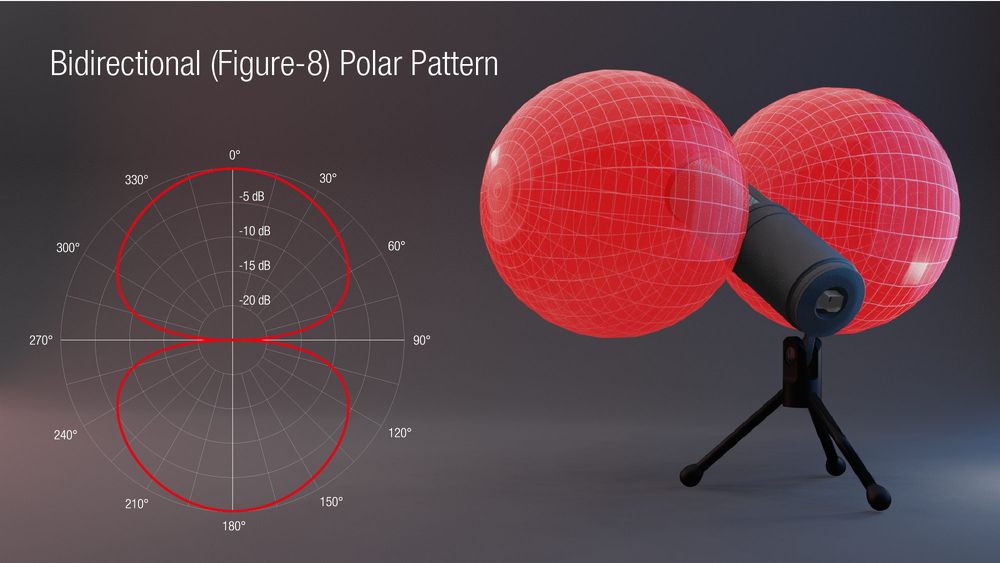4. Characteristics
Ribbons are a little peculiar. You should know about their quirks in order to take full advantage of their potential.
Directional Pattern: Figure Eight
The natural directional pattern of a ribbon microphone is figure eight, i.e. bidirectional. As the ribbon hangs between two magnet pieces, its only logical, that it will react equally to sound from the front and from the rear. The bidirectional pick up pattern is actually quite handy in many situations. One speciality of the figure eight pattern is that sound from the sides (90 degrees to the front or rear) is rejected very, very effectively. You can take advantage of that and place your mic so that your computer or other unwanted sound sources are in its dead angle. If you do need a different directional pattern than figure eight, beyerdynamic offers ribbon microphones with a hypercaridoid pattern.
Strong Proximity Effect
Figure eight pattern implies a strong proximity effect, i.e. bass frequencies are boosted the closer you get to the mic. Voices become thick and sonorous. Thats what made ribbons popular with radio announcers in the old days. Ribbon microphones are ideal for small chested singers. More powerful singers and speakers better step back a little, so the low frequencies wont get in the way of bass and guitar tracks. 30 cm/1 ft should be about the minimum distance between the singers mouth and the microphone. Use a low cut if you want to work the mic a little more closely.
Phase Relationship
Because of the high directionality of the figure eight pattern and the powerful bass energy produced by the proximity effect, the phase relationship is of particular importance. When a singer stands in front of the microphone he (or she) hears his own voice both directly though the air (and skull bones) and over the electric signal chain: mic preamp monitoring mixer headphones. If the direct signal and the electric chain are out of phase, certain frequencies will be cancelled out. The voice will appear distant and thin to the singer (but not to the engineer!). Press the phase reverse button on your preamp and ask the singer which position of the switch sounds better to him (or her). It often makes a big difference (especially with low voices). Not in the sound that you capture on tape or hard disk but in the quality of the singers performance. Good monitoring sound makes for better performances!
Low Output
As has been mentioned already, ribbons are of lower sensitivity than other microphones. You need a good, clean, low noise preamp to take full advantage of a ribbon microphone. Fortunately, low noise is not exclusive to expensive preamps anymore. Even budget microphone preamps often offer EIN figures (Equivalent Input Noise) better than -125 dB. (See FAQ or take a look at our Online Guide Preamps to learn more about noise figures). Ribbon mics also require a lot of gain. If you plan on miking quiet sources such as nylon string guitars, you need a preamp that offers at least 60 dB gain.
Ribbons Are Fragile
The ribbon element is a delicate construction. Avoid mechanical shocks and treat your ribbon carefully. Dont ever blow into a ribbon mic in fact never blow into any microphone and dont use an unprotected ribbon in a windy environment. If you want to use it on stage (which is tricky, because of the figure eight pattern), use a foam windscreen. For vocal recordings in the studio, its best to use an external pop screen. Make sure you dont apply phantom power to the ribbon (except if its an active ribbon mic). Phantom power can permanently damage your ribbon mic (see FAQ).


